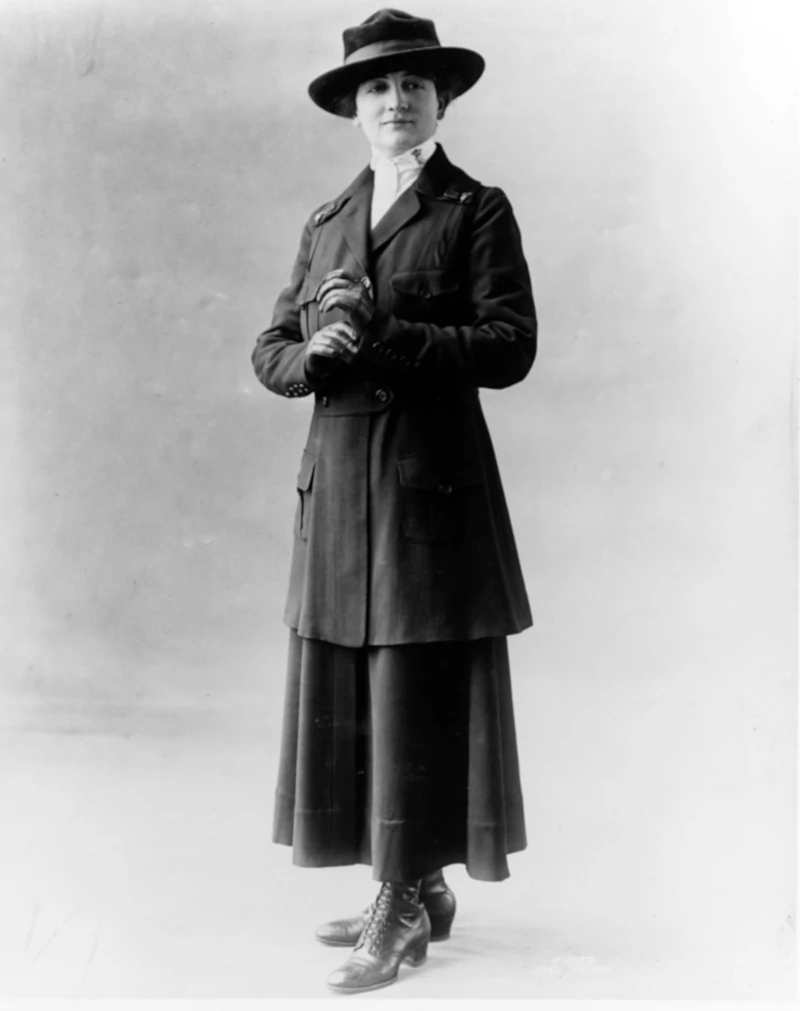
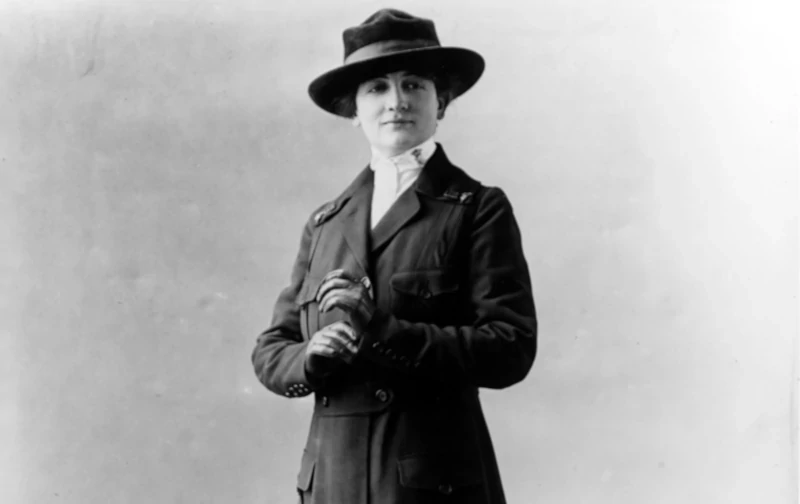
An official U.S. Navy photograph of an early Nurse's Uniform (Image #52964 from the U.S. Navy Heritage and History Command), with the caption: "The Army Nurse wears the caduceus, the winged staff, and serpents of the Medical Corps, with the letters U.S., on her outdoor uniform. If she entered the Army Nurse Corps from the Red Cross Reserve for that Corps, she is permitted to retain the red cross insignia on her service cap."
By Douglas R. Cubbison, Curator, National Museum of Military Vehicles
Women in the U.S. Navy, World War I
Women had assisted informally, as volunteers or wives of sailors and Marines, in hospitals since the establishment of the U.S. Navy in 1775. However, they were not formal members of the Navy. On May 13, 1908, President Theodore Roosevelt signed a bill establishing the United States Navy Nurse Corps- and the first twenty female Nurses began their legal service in the U.S. Navy.
By the beginning of World War I, women were well established as Navy Nurses, and they served with distinction in Navy garrison hospitals in the United States, France, and England, including 25 U.S. Navy hospitals in France, caring for wounded Marines (part of the Navy Department). By the Armistice, there were 1,386 Navy Nurses serving in France. Overall, the American Red Cross recruited over 22,000 professionally trained female nurses to support the war effort, of which over 10,000 served with the American Expeditionary Force (AEF) on the Western Front.
When the U.S. Navy Authorization Bill ("The Naval Act of 1916") for 1916 was passed, it declared that the reserve force within the U.S. Navy would consist of those who had prior naval service, prior service in merchant marines, were part of a crew of a civilian ship commissioned in naval service, or "all persons who may be capable of performing special useful service for coastal defense." This last phrase contained the loophole that allowed women to enlist. When the U.S. Navy faced the need for a huge expansion because of our nation's entrance into World War I in April 1917, the Navy began enlisting women into its reserve force in accordance with the Naval Act of 1916.
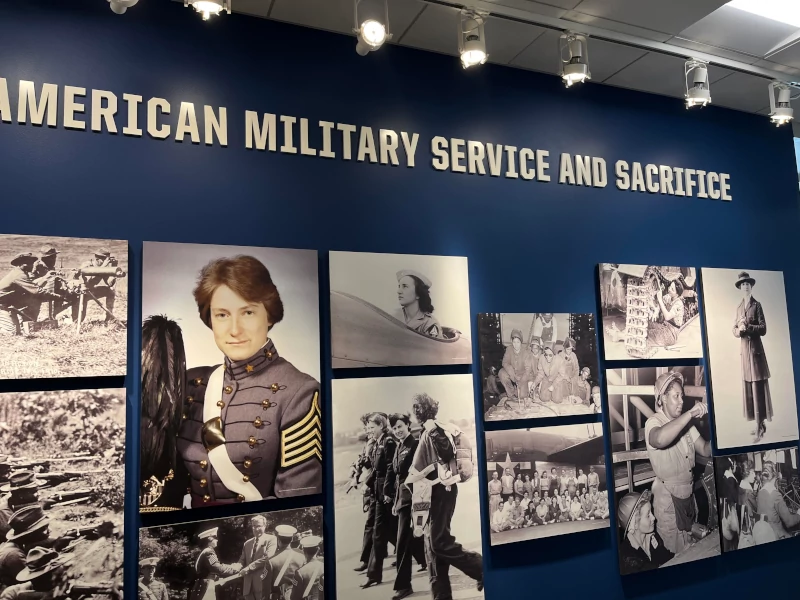
Initially, the women were enlisted as "Yeomen," performing primarily administrative and clerical duties. However, eventually, women served as Naval truck drivers, telegraphers, telephone and radio operators, mechanics, camouflage developers, and ordnance handlers. This was not an insignificant contribution to the war effort. By the end of the war, there were over 11,000 female Yeomen serving in the U.S. Navy. Unlike the Army's Telephone Operators, female Yeomen received the same pay as sailors and marines, a uniform allowance, medical care, serviceman's insurance, and identical benefits to their male counterparts
When the first Navy Yeomen were enlisted, they had no authorized uniform, and women had to create their own - generally navy-blue wool skirts and jackets with white blouses and straw hats with black ribbons, loosely based upon U.S. Navy sailor uniforms. An initial uniform was belatedly specified by the U.S. Navy in 1917 and updated in 1918. The Curator, while with the Wyoming Veterans Memorial Museum in Casper, had the privilege of documenting an original Navy Yeomen's Uniform from World War I.
These women served with considerable distinction. With the end of the war, they were discharged in 1919, although many of them were immediately re-hired into the same position as civil servants with the Navy Department. A number of these ladies became the first female members of the American Legion.
The National Museum of Military Vehicles recognizes the early service and sacrifices of Nurses and Yeomen in the U.S. Navy during World War I by a photograph in Corridor 108, dedicated to "American Military Service and Sacrifice".
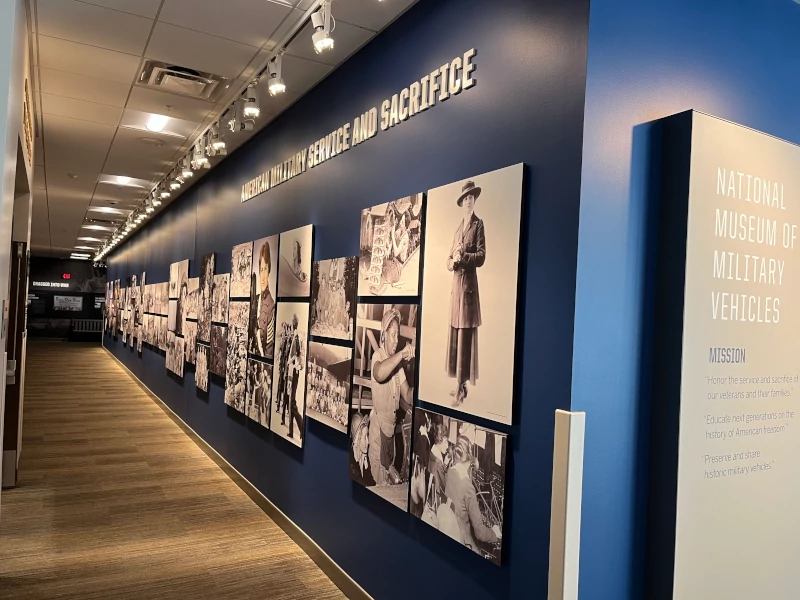
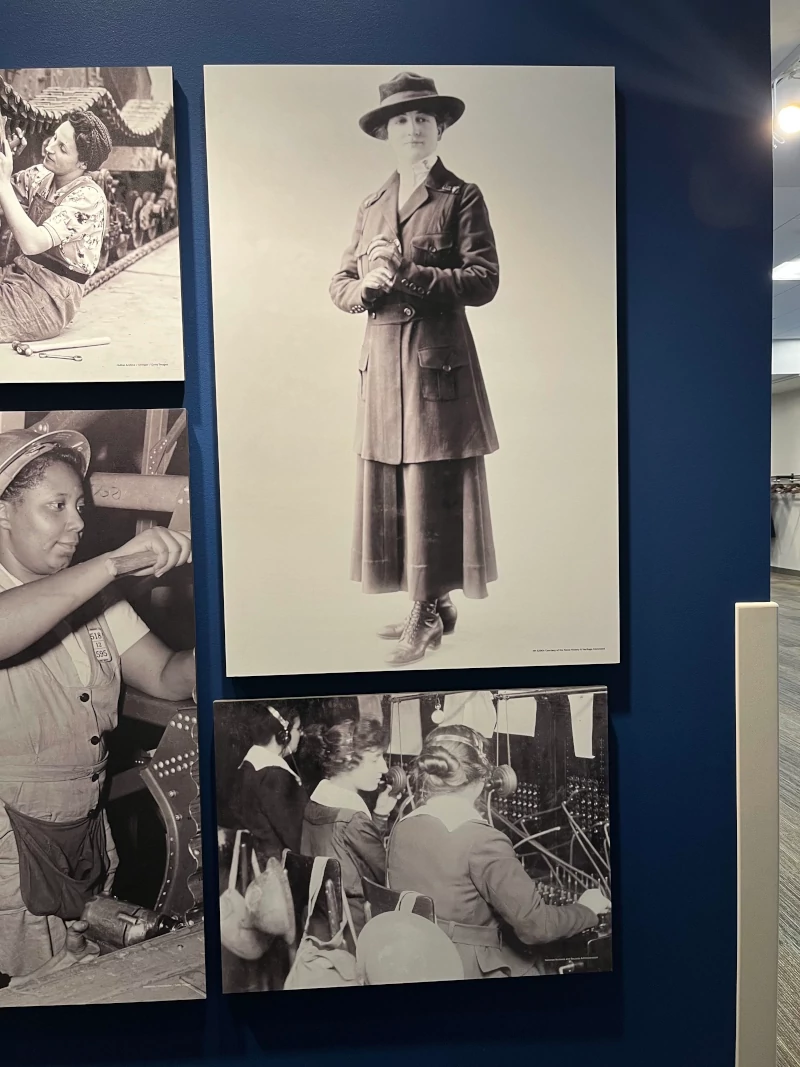
This is an official U.S. Navy photograph of an early Nurse's Uniform (Image #52964 from the U.S. Navy Heritage and History Command), with the caption: "The Army Nurse wears the caduceus, the winged staff, and serpents of the Medical Corps, with the letters U.S., on her outdoor uniform. If she entered the Army Nurse Corps from the Red Cross Reserve for that Corps, she is permitted to retain the red cross insignia on her service cap."
